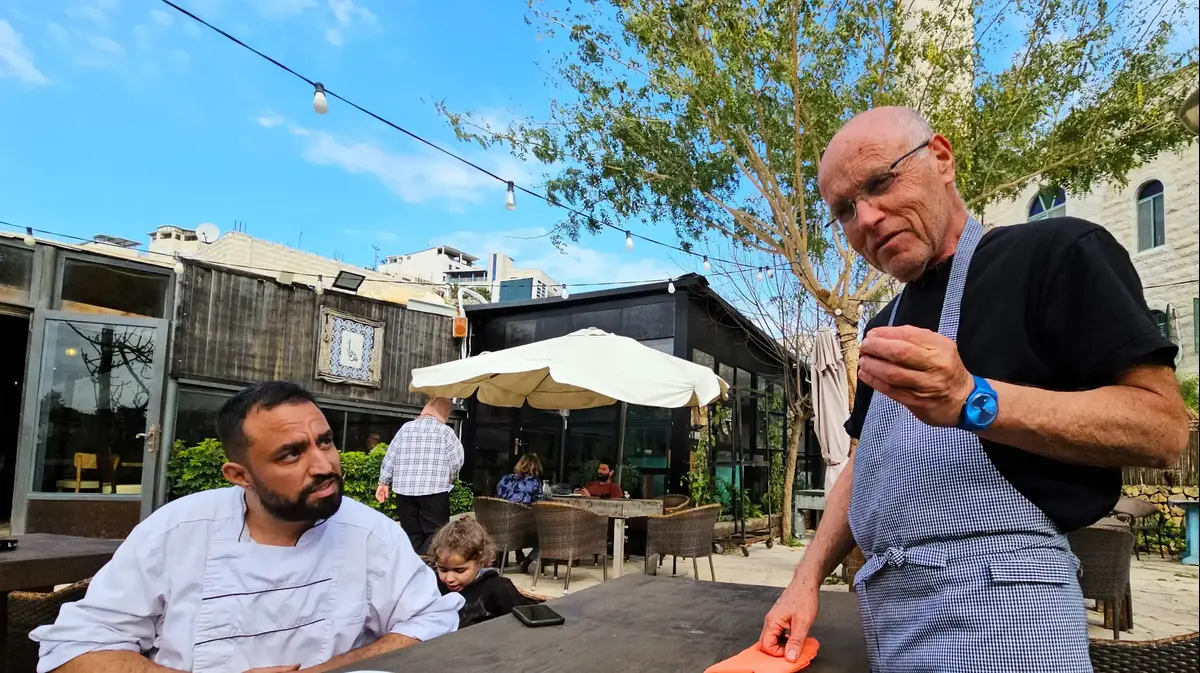She is the village blessed, patroness of an association, multiple namesake and the main character of a play: Since Blessed Edigna sought refuge in a hollow linden tree next to the Pucher church, she has shaped the village.
And that's why not only a play, but also a street is dedicated to her.
+
The Edignaweg leads past the linden tree.
© Peter Weber
Puch -
The Edignaweg leads past the Church of St. Sebastian and the very linden tree around which the legend is entwined.
Edigna was a daughter of the French King Henry I. She fled a planned marriage.
In Bavaria a farmer took them with him on his ox cart.
So she sat next to a rooster and a bell.
According to legend, the ox stopped below the village of Puch - at that time not yet a Bruck district.
The rooster crowed and the bell rang.
Edigna interpreted this as a signal to dismount.
She stayed in Puch until her death and lived in a hollow linden tree.
The citizens revered her as a miracle worker.
After her death on February 26, 1109 - this date has been handed down - holy oil is said to have flowed from the linden tree.
When people tried to sell it for profit, it dried up.
Since then, Blessed Edigna has been venerated.
First mention by Aventine
+
In 1988 young Ukrainians donated an Edigna picture.
© Peter Weber
For the first time, Aventine reports in connection with the death of Emperor Ludwig of Bavaria, who died in a bear hunt near Puch, that Edigna's bones were buried here.
Around 1600 her bones were kept in the left side altar of St. Sebastian.
The altar is dedicated to Edigna, since then the veneration has increased.
In 1978 a grave was discovered in the church where she could have been buried.
The Pucher Church and the Blessed Edigna were and are the destination of many pilgrimages.
A votive tablet from 1639 tells of a child from Mammendorf who suffered from "red deer" and recovered overnight.
Ukrainian pilgrims also come to Puch on a regular basis - even the then Ukrainian President Viktor Yushchenko in 2007. Edigna also works in the international union of Europe.
Her mother Anna was from Ukraine.
Therefore, she is venerated there to this day.
Representatives of the Edigna Association have already been invited to the Edigna Anna Festival in Ukraine.
Edigna is seen as a helper in need
+
A ceiling fresco in St. Sebastian shows Edigna.
© Peter Weber
Edigna is still called to this day as a helper in an emergency - as a cattle patron, with everyday problems and accidents, to recover lost or stolen things, in the event of illness and at the hour of death.
"She is a role model and is considered to be a community," says Edigna Kellermann.
The chairwoman of the Edigna Association also sees her namesake as a role model.
“She was a strong woman who set out with trust in God.” And she was there for others.
Every ten years, the legend comes to life with the Edigna Games.
The piece is revised or reinterpreted each time, so that the audience can always discover new facets of their village saint.
It was only last year that director Marcus Everding brought the legend into the present.
It was performed for the first time in 1959, on the occasion of the 850th anniversary of the death of Blessed Edigna - on the initiative of Wolfgang Völk, the district administrator at the time, and the Pucher municipal council.
The piece was written by Franz S. Wagner.
Since then, the Edigna Games have been held every ten years - the next time in 2029.
Edigna games bring Pucher together
+
An Edigna figure stands at the foot of the linden tree.
© Peter Weber
Organization is one of the main tasks of the Edigna Association, which was founded in 1969.
“The games bring the residents together,” says Edigna Kellermann.
Young and old, born and relocated Puchers take part.
This is how the integration of the new citizens succeeds.
“If you get involved, you will also find a home.” In addition, the association promotes the veneration of the Blessed Edigna and is involved in social and cultural life.
Renewing and strengthening the village community is a central goal.
This is done by a mother-child group, the painting group “Pucher color circle” and the pre-Christmas family afternoon, in which many from the village community participate.
In addition, the association takes part in the Leonhardiffahrt every year with the ox wagon and a group of feet.
The Puchers are proud of their village patroness.
Three women and girls bear their names, eight others have Edigna as their middle name - the youngest Edigna in Puch is just four months old.
Even more Edignas come together every year for a festive service with a reception around the traditional day of death.
And that memory is far more vivid than a dedicated street.
You can find more news
from the city of Fürstenfeldbruck here.











/cloudfront-eu-central-1.images.arcpublishing.com/prisa/KMEYMJKESBAZBE4MRBAM4TGHIQ.jpg)



